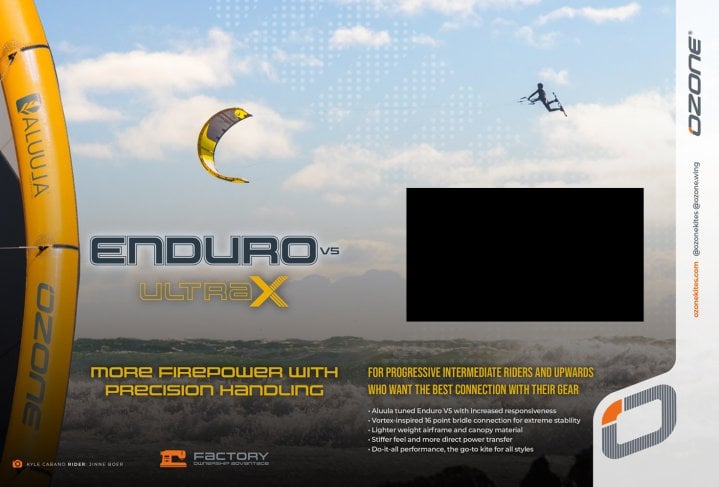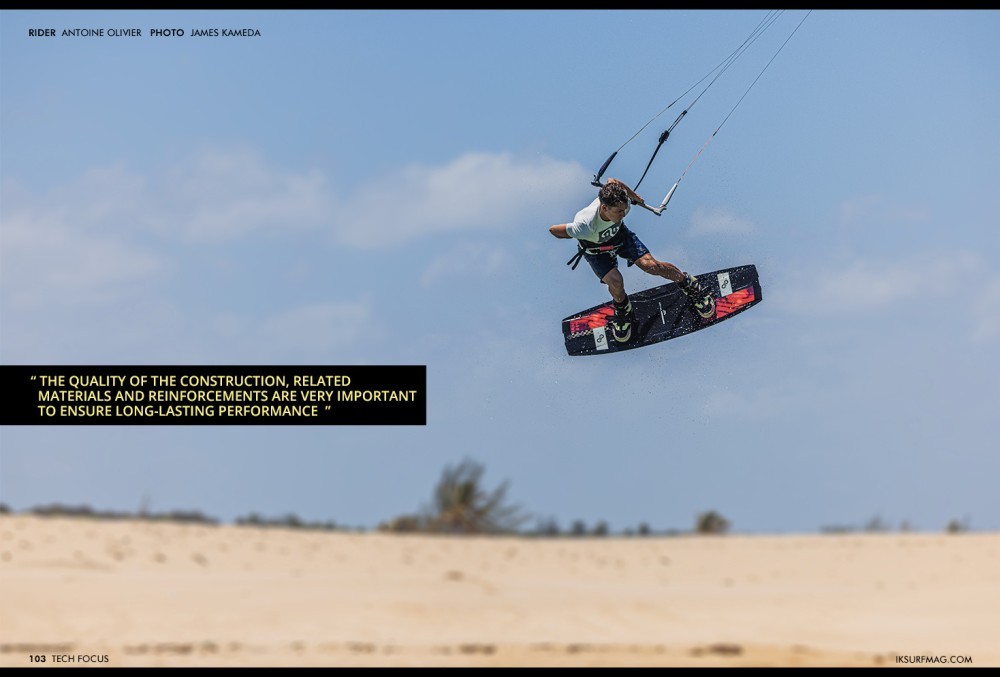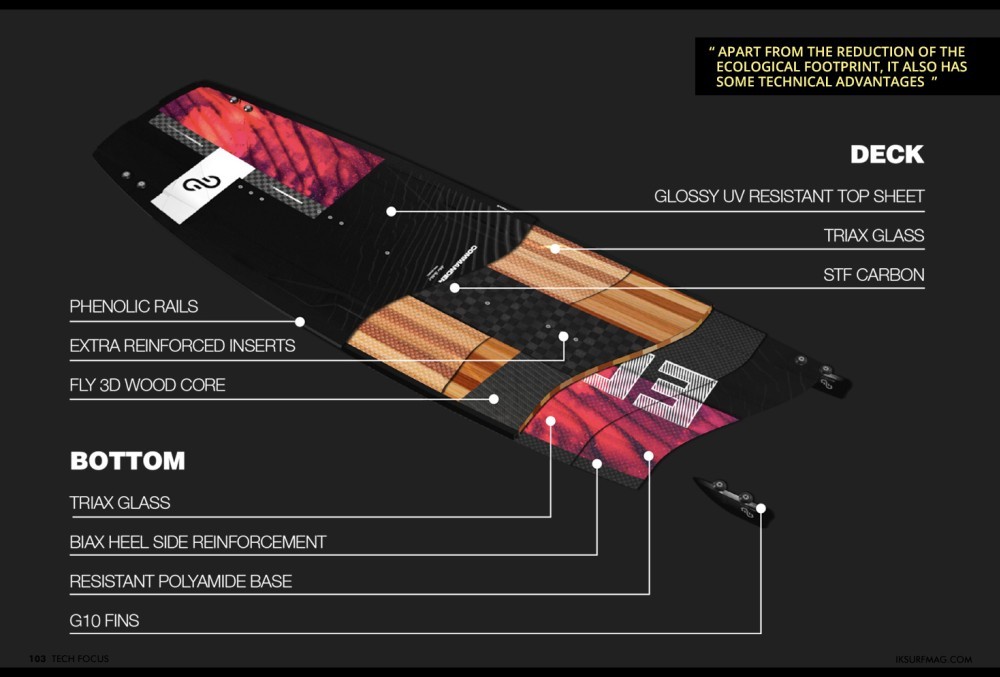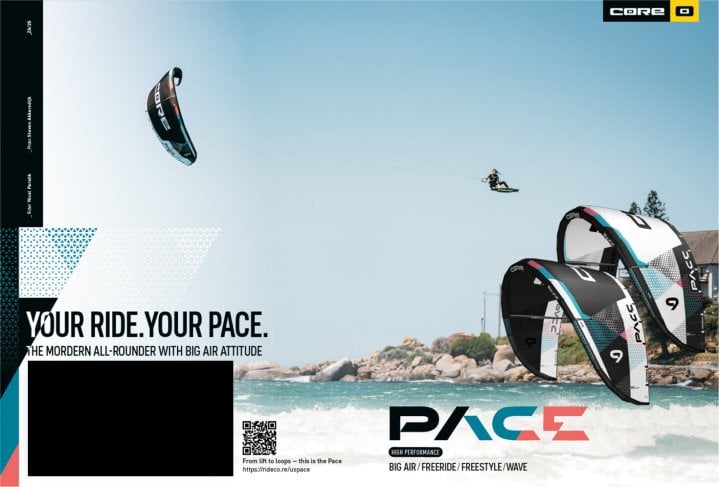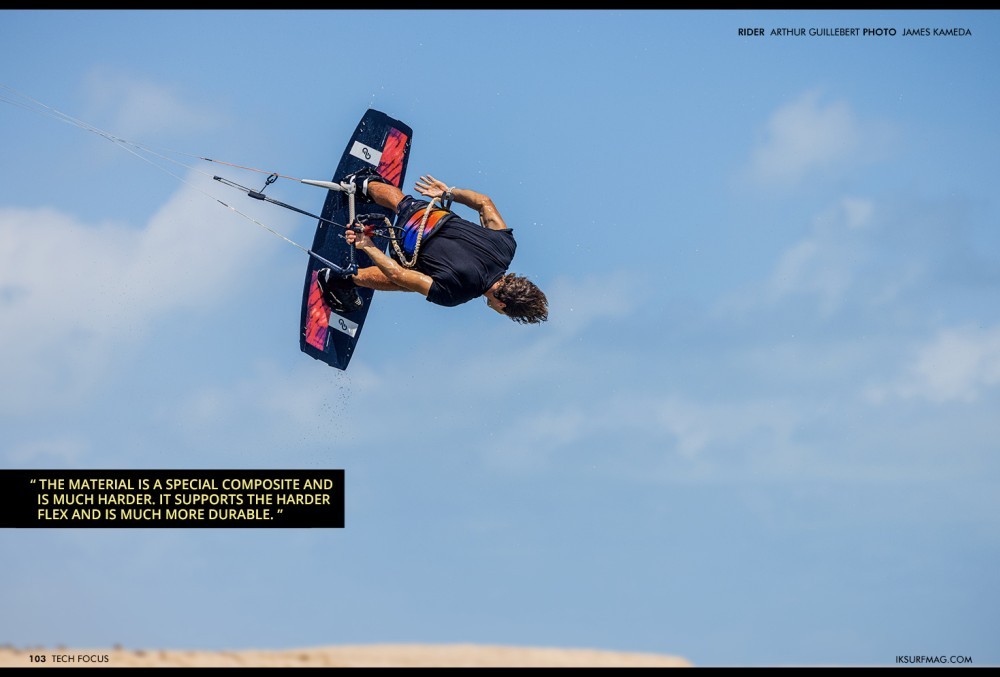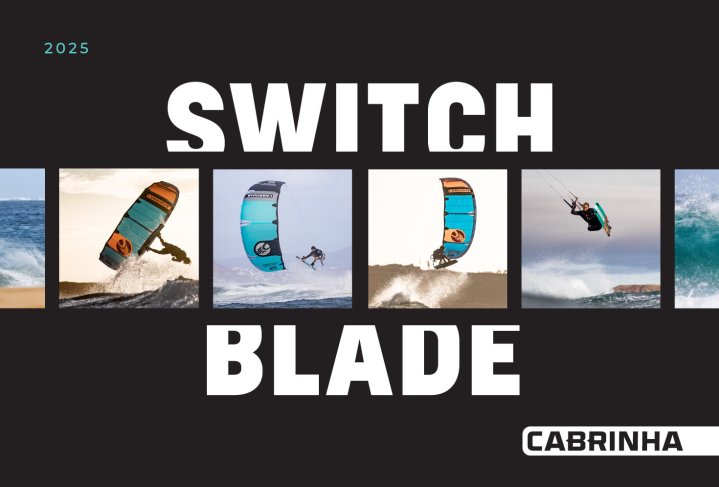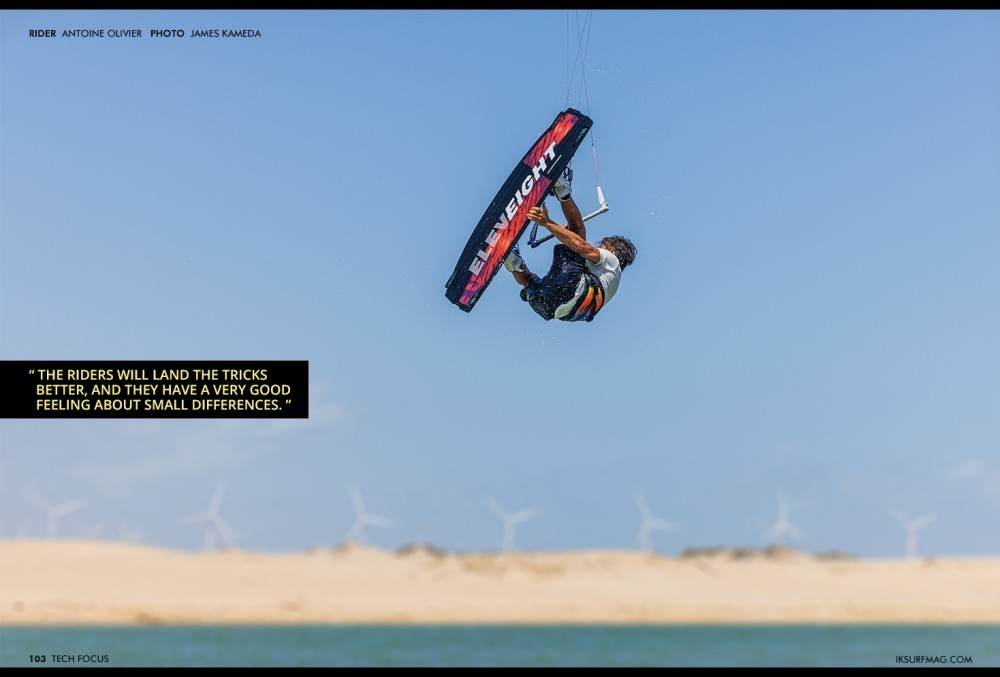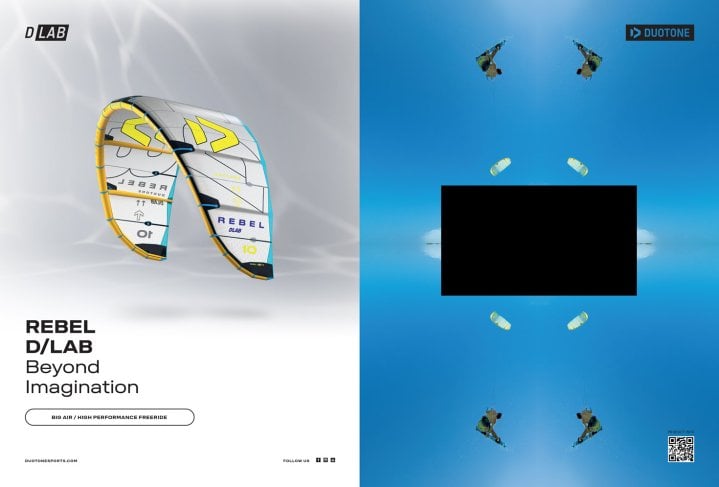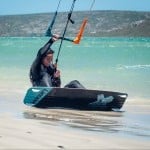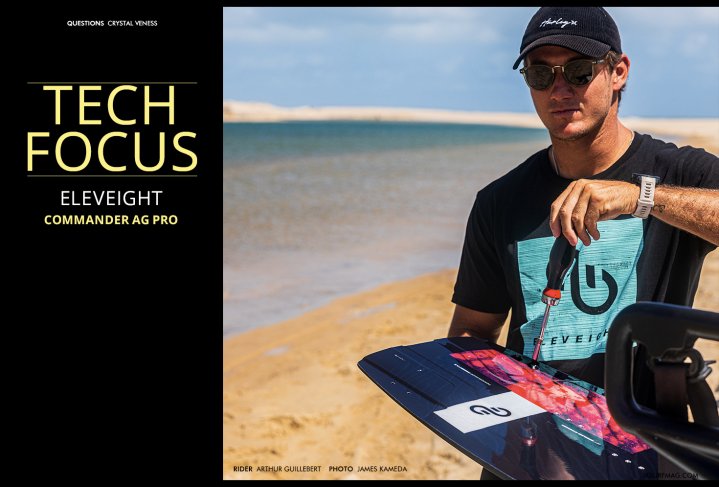
Tech Focus: Eleveight Commander AG PRO V2
Issue 103 / Mon 19th Feb, 2024
What goes into designing and testing a twin tip that can perform at its best at the highest level of kiteboarding? The Eleveight R+D Team gives us their insights on how they created the new Commander AG PRO V2 in this Q&A!
Creating a board that can achieve the highest performance for a specific discipline must be a daunting task! First, what qualities should a top-of-the-line freestyle board have?
For sure, most modern freeride boards need to focus on comfort and an easy-to-use mentality, but the Commander AG PRO is a freestyle board specifically for the advanced rider with very different needs.
An important aspect of the construction and design must be durability, as most freestyle boards are used with boots and have to tackle a much bigger load on landings. The quality of the construction, related materials and reinforcements are very important to ensure long-lasting performance. Nevertheless, durability shouldn't mean that it's heavy, so we have the added challenge for it to also be light and agile to support advanced tricks. The times of simply using a heavy wakestyle construction are over. Modern freestyle boards, such as the Commander, are based on a fairly light construction with a mix of different materials.
The second important quality is that it has more dynamic and aggressive flex, as freestyle is much more physical, meaning the riders tackle much more load and speed in the tricks. Direct feedback is essential, so a harder flex or a stiffer construction helps feel contact when popping and landing. The related rebound flex also plays a vital role in loading up the board when popping a trick.
Lastly, the rocker and bottom shape of a freestyle board need much more grip and control when executing complex tricks. Channels are a very common feature to help the grip, and we also need a bit more rocker for controlled landings.
What has changed in the shape between the Commander AG PRO V1 and V2? What were the designers working to achieve with these changes?
Our board shaper, Franz Schitzhofer, was in very close communication with Arthur. They started to refine the board at the beginning of 2023. One of their aims was to refine the flex pattern, trying different layups of carbon and glass to find the right mix. Version 1 had a full layer of carbon, but for V2, we changed it to a spread tow carbon stripe with a full layer of triax carbon to make the board a bit more dynamic with softer landings.
The guys also worked on specific reinforcements to ensure the best durability. Version 2 features new heelside reinforcements to tackle riding boots in the best way.
We also used a new epoxy resin with the main aim of using more sustainably sourced materials. Greenpoxy is a bio-based epoxy resin, and 35% of its molecular structure is derived from plants and vegetables. Apart from the reduction of the ecological footprint, it also has some technical advantages, such as giving a very clear resin with great colour enhancement for screen and digital prints, increased durability, and high impregnation properties, resulting in low resin consumption.
Please give some details on the key construction features of the board and why they were chosen for the purpose of high-performance freestyle.
The construction method for the new version of the Commander AG PRO remained almost the same. The Paulownia wood core has been made a bit thicker, and the inserts are reinforced with an extra block of plywood. Instead of normal biax glass, we use lightweight triax glass top and bottom, which has more woven dimensions with better torsional stiffness and it also reinforces the heels.
The mentioned spread tow carbon stringer is a tip-to-tip stringer that's 15 cm in width. In comparison with our other boards, the Commander AG PRO features phenolic rails instead of our commonly used ABS. The material is a special composite and is much harder. It supports the harder flex and is much more durable. We also use a polyamide base for the Commander which is more abrasion-resistant, too!
For riders who don't have the opportunity to test the board themselves, can you describe what it feels like to ride this board?
The first thing you notice is there's a ton of grip when you ride. If you edge the board hard, you feel the increase in control, and the same feeling appears when you pop and release the board for a jump.
The second thing is the stiffer, more dynamic flex. The Commander is very agile and reacts to any riding impulse. You feel it when popping, but even more so when landing, as it can control speed very well.
It's super nice as it has loads of grip when you ride it on its rail/edge, which is great for jumping, but it also feels really playful when you ride in flatter water due to the ease of grip.
What sort of testing is necessary to ensure that the board meets the needs of pro freestylers like Arthur Guillebert?
Testing plays a crucial role in developing such a pro product, and Arthur Guillebert is one of the main testers receiving all the different prototypes. With his riding level, he knows exactly what he wants, and he's in close contact with Franz, who then makes refinements based on his feedback. Franz also tests the boards but for different aspects.
We always aim to test our boards in different conditions. Everything works well in super flat water, but riders do not always have perfect conditions, so we want to put our gear through a real test.
The Commander comes in 3 different sizes, so we must also ensure that each board is perfectly balanced for different rider weights. Our extended test team helped with this task, and our younger crew tested the smaller sizes. Antoine Olivier is from New Caledonia, like Arthur, and they ride together a lot during winter.
What was the testing and feedback process like? How did the team realise that they'd arrived at the perfect final product?
It's actually very easy because as soon as they don't want to give the sample back and start fighting for it, we know that's the final product!
A more sophisticated answer is when we find a well-balanced prototype. The riders will land the tricks better, and they have a very good feeling about small differences. Usually, they all agree on one model, and then Franz knows the specific requirements and can set it up for mass production.
While this board is primarily intended for riding freestyle, are there other styles of riding or types of rider that may enjoy the features of the Commander AG PRO V2?
The Commander AG PRO is directed more towards freestyle, but it is also a great weapon for the big air riders. It has a ton of grip and works well in strong wind conditions. Furthermore, it may be a good choice for someone who wants to get into freestyle and is ambitious with unhooked tricks. The Commander also works well with straps and pads and will help with the progression to becoming a top-notch freestyler!
Videos
By Crystal Veness
Editor at IKSURFMAG, Crystal Veness hails from Canada but is based in South Africa. When she isn't busy kitesurfing or reporting on the latest industry news for the mag, she is kicking back somewhere at a windy kite beach or working on creative media projects.



